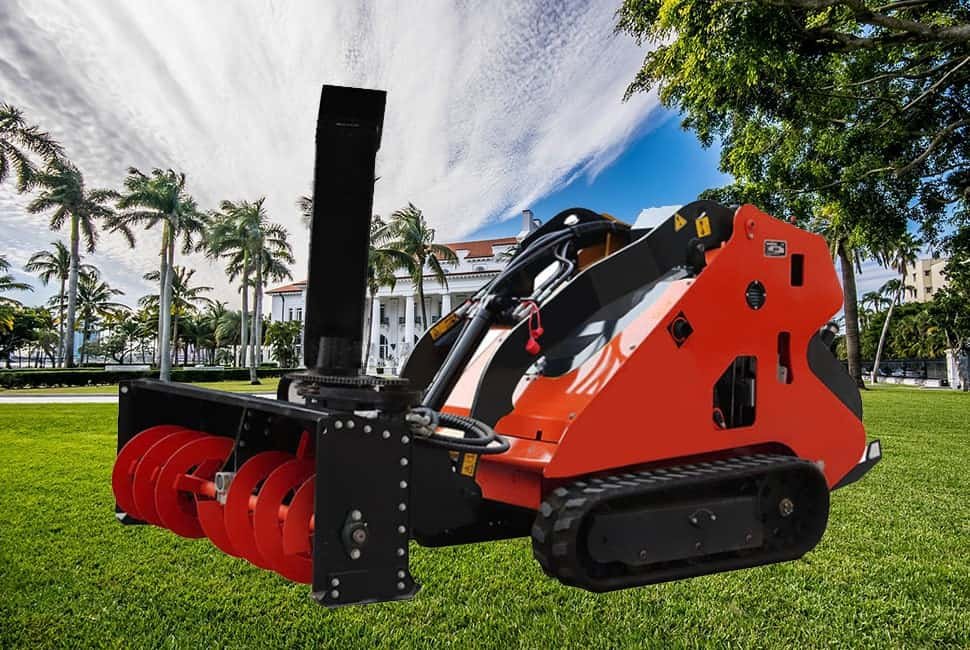When working on construction projects, choosing the right size wheel loader is critical. Selecting the wrong size can affect efficiency, increase costs, and even compromise safety on the job site.
The wheel loader size is crucial to its performance on your project. From small-scale tasks to large, heavy-duty operations, understanding the best wheel loader size will ensure you make an informed decision. This guide helps you choose the most suitable wheel loader for your needs.
Now, let’s explore the key factors to consider when selecting the perfect wheel loader size for your project.
What Factors Influence Wheel Loader Size?
The size of a wheel loader is determined by a number of factors, including the size of the project, the characteristics of the working environment, and the specific tasks that need to be completed. Understanding these variables is crucial to choosing the machine that best suits your needs.
The size of wheel loaders is affected by several key factors, such as terrain, load requirements and operating speed. For example, smaller loaders are generally easier to operate and better suited to confined Spaces, and their compact design makes them easier to navigate. In contrast, the larger models are well suited for heavy duty operations over wide areas, and their larger size and capacity allow them to handle larger loads more efficiently.
When choosing a wheel loader, it is important to first assess the physical space of the working environment. If you work in crowded areas or need to operate in tight Spaces, such as in the narrow aisles of an urban construction site or warehouse, smaller models and more compact designs may be more appropriate. This will allow for greater flexibility and ease of movement in limited Spaces.
On the other hand, for large construction projects, mining operations or other large worksites that require heavy lifting and bulk material handling, large wheel loaders with higher load capacity are required. This will allow you to move large volumes of material faster and more efficiently, resulting in increased productivity.

In addition, factors such as the terrain and climatic conditions of the site will also affect the performance of the machine and the size you need. For example, if you are working on steep slopes, uneven ground, or loose gravel, a wheel loader with adequate traction and stability is essential. This may affect the choice of tire type or the overall design of the machine.
Similarly, extreme climatic conditions, such as heat or cold, can affect the performance and durability of wheel loaders. In this case, you may want to consider features such as enhanced cooling systems or cold weather kits to ensure optimal operation and service life of your equipment.
By carefully considering these factors and understanding the specific requirements of your project, you can choose the wheel loader that suits your needs, ensuring efficient and effective operation in any work environment.
What is the Size Range of Wheel Loaders?
Small wheel loaders, weighing between one and three tons, are ideal for urban construction projects and small-scale agricultural tasks. Their compact size allows them to easily maneuver through tight spaces, making them ideal for urban construction sites with limited space or small agricultural operations that require precision and maneuverability. These loaders typically have smaller bucket capacities and lower horsepower, sufficient for lighter loads and less intensive tasks.
Medium loaders, weighing between three and eight tons, are the top choice for medium-sized construction sites. They offer a good balance between maneuverability and power, making them versatile enough to handle a variety of general construction tasks. These loaders have medium-sized buckets and engines that can efficiently move materials and perform a variety of tasks without requiring excessive power or size.
Large wheel loaders, weighing eight tons and above, are the workhorses of the industry, designed for heavy-duty work such as mining and large earthmoving projects. These machines are designed to handle large amounts of material and bulky objects with ease. They are equipped with powerful engines and greater load capacity, enabling them to lift tons of material and perform demanding jobs on extensive construction sites or mining operations where durability and strength are essential.

In conclusion, the size of a wheel loader should be chosen based on the specific requirements of the task at hand, taking into account factors such as space restrictions, load capacity and the intensity of the work to be performed.
How to Calculate the Optimal Wheel Loader Size for Your Project?
Determining the right wheel loader size for your project is critical to maximizing efficiency and minimizing costs. By carefully evaluating the project scope, load requirements, and time constraints, you can select the machine that best suits your needs.
To find the best wheel loader size, there are several key factors to consider. First, assess the amount of material that needs to be moved throughout the project. This will help you understand the load capacity required. For example, if you’re handling large amounts of dirt, rock, or other heavy materials, you’ll need a wheel loader with a higher bucket capacity to handle these loads efficiently.
Next, consider the duration of the project. If you’re working on a tight schedule and need to complete tasks quickly, choosing a large wheel loader with faster cycle times can significantly increase productivity. This will allow you to move materials faster and meet your deadlines more efficiently.

Additionally, it is critical to evaluate the space constraints within which the loader will operate. In confined areas where maneuvering space is limited, such as urban construction sites or tight workspaces, choosing a smaller, more compact wheel loader can prevent unnecessary delays and ensure the job runs smoothly. A compact loader will be able to navigate tight spaces more easily, allowing you to work efficiently without compromising performance.
By considering these factors and ensuring your loader’s capacity matches the requirements of the job, you can improve overall performance and reduce operating costs. This strategic approach will help you select a wheel loader that’s right for your project’s specific requirements, resulting in increased efficiency and cost savings.
What are the Advantages of Choosing the Right Wheel Loader Size?
Choosing the right wheel loader size has many benefits, including increased efficiency, reduced maintenance costs, and improved safety on the job site.
When you choose the right wheel loader size, you optimize the machine’s performance, which allows you to work more efficiently. This not only helps complete tasks faster, but it also reduces fuel consumption because the loader is operating within its designed capacity without being overloaded. Additionally, using a wheel loader that is appropriate for the task at hand minimizes the risk of equipment failure. Overuse of a small loader or underuse of a large loader can lead to unnecessary wear and tear, potential breakdowns, and even safety hazards.
By ensuring that a wheel loader is operating within its optimal parameters, you can avoid the pitfalls of using an inappropriate machine. For example, if a loader is too small, the job will be more difficult, which will lead to increased fuel usage and accelerated wear on its components. Conversely, a loader that is too large may have difficulty operating effectively in a limited space, resulting in operational delays and inefficiencies.
Additionally, choosing the right size wheel loader can significantly extend the life of the equipment. This reduces the frequency of repairs and reduces maintenance costs over time. By being proactive in choosing the right size, you can not only save money in the long run, but you can also ensure that your project runs smoothly and efficiently, leading to success.
When Should You Upgrade to a Larger or Smaller Wheel Loader?
As your project grows, you may find that you need to adjust the size of your wheel loader. Recognizing the right time to make this change is essential to maintaining productivity and cost-effectiveness throughout the project lifecycle.

If your project scope expands or conditions at your job site change significantly, upgrading to a larger wheel loader may be necessary to meet the increased demands. For example, if you are handling a larger volume of material or more challenging terrain, a larger machine can provide the additional power and capacity needed to effectively handle these tasks. Larger wheel loaders typically offer higher load capacities, more powerful engines, and faster cycle times, which can greatly increase productivity and ensure your project stays on schedule.
On the other hand, if your work requires greater flexibility or is performed in smaller, more confined spaces, switching to a smaller, more agile wheel loader may be a better option. In these cases, a compact loader can more easily navigate tight spaces and offer greater maneuverability, allowing you to work efficiently without interruptions or delays. Smaller machines are also generally more fuel-efficient and may incur lower maintenance costs, which can help save on overall costs.
Regularly reassessing the needs of your project and the specific requirements of each phase is essential to making an informed decision about the size of wheel loader that should be used. By adjusting for these factors and adjusting your equipment accordingly, you can ensure that you are always using the best machine for the task at hand, thereby maximizing efficiency and maintaining cost-effectiveness throughout your project.
Summary
Choosing the right wheel loader size is essential for optimizing efficiency, safety, and cost-effectiveness. Make sure to assess your project’s needs carefully to select the most suitable loader.


